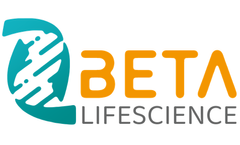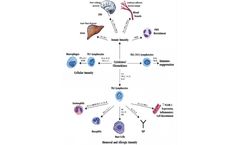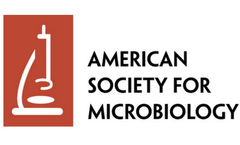Hematopoietic Cell Articles & Analysis
14 articles found
Cytokines are a broad class of tiny proteins that are essential for controlling inflammation and immunological responses. Numerous cell types, including fibroblasts, endothelial cells, immunological cells, and epithelial cells, produce these signaling molecules. ...
What is CAR T-cell therapy? Car-t cell therapy involves genetically engineering T cells isolated from patients or allogeneic donors to express chimeric antigen receptors (CAR) that specifically recognize and kill tumor cells. ...
IL-17 Ligand Family IL-17A IL-17A plays a core role in the pathogenesis of psoriasis, and the inhibitory antibodies currently used to treat this disease are mainly aimed at this target. It acts on non-hematopoietic cells, especially epithelial cells, and plays an important role in the immune response in neighboring organs. ...
Welcome to our newest blog series where we investigate Amyotrophic Lateral Sclerosis (ALS) using our AI knowledge mapping tools. Check back for our next installment, in which we analyze transcriptomics from spinal cord samples collected from patients as well as a mouse model. In this post, we will continue to explore publicly available datasets surrounding Amyotrophic Lateral Sclerosis ...
ByPercayAI
Chimeric antigen receptor T cells (CAR-T) and T cell antigen receptor chimeric T cells (TCR-T) are currently the "top stream" in adoptive T cell tumor immunotherapy. ...
In addition, gut flora may be a new strategy to improve the prognosis of allogeneic hematopoietic cell transplantation in the future. There does not appear to be a common mechanism for how bacteria and drugs interact. ...
The functions of fatty acids in cancer cells include the following: 1. Fatty acid synthesis and cell growth Actively proliferating tissues require fatty acids for the synthesis of structural lipids. Thus, the induction of lipid synthesis must be closely linked to cell growth, which is a prerequisite for cell division. Inhibition ...
The key to this patient's recovery was a blood stem cell transplant: The researchers first used chemotherapy drugs to kill the patient's own immune cells and then transplanted new cells that would not be infected by HIV. The blood stem cells she received had a mutation called "CCR5Δ32/Δ32," which protects T ...
For example, IL-2 is produced by activated T cells and can enhance the growth and proliferation of T cells themselves; IL-12 can be produced by dendritic cells, B cells, and monocytes-macrophages and can induce the directed differentiation of T cells into type 1 helper T cells. ...
The authors report that STAT1KO mice spontaneously develop inflammatory diseases characterized by bone marrow hyperplasia and splenic accumulation of hematopoietic stem cells. In addition, these animals developed inflammatory bowel disease. Analysis of intestinal bacteria revealed severe dysbiosis in the absence of potent IFN signaling, which triggers expansion ...
What is your background and experience in the regenerative medicine and stem cell space? How did this lead you to Regeneus? A. I have always been fascinated by Medical Science, especially the regenerative medicine and stem cell fields. ...
Notch1 and RBP-j are critical for the specification of hematopoietic stem cells (HSCs) in Notch signal-receiving cells. However, the mechanism by which Notch signaling is triggered from the Notch signal-sending cells to support embryonic hematopoiesis remains to be determined. We previously reported that Mind bomb-1 (Mib1) ...
In preliminary experiments, forced expression of these microRNAs in Hoxa9-immortalized bone marrow cells downregulated the HOXA9 protein and caused loss of biological activity. The microRNAs were shown to target their predicted sites within the homeobox. miR-126 and Hoxa9 mRNA are coexpressed in hematopoietic stem cells and downregulated in ...
To study the normal cell response to low doses of radiation we have irradiated CD34+ haematopoietic stem cells with alpha particles with doses between 0.3 and 0.6 Gy. Radiation sources used are 222Rn and his daughters 218Po and 214Po previously dissolved in culture medium. CD34+ cells are exposed to alpha radiation and cultured for different times and doses, and later, survival, apoptosis ...










